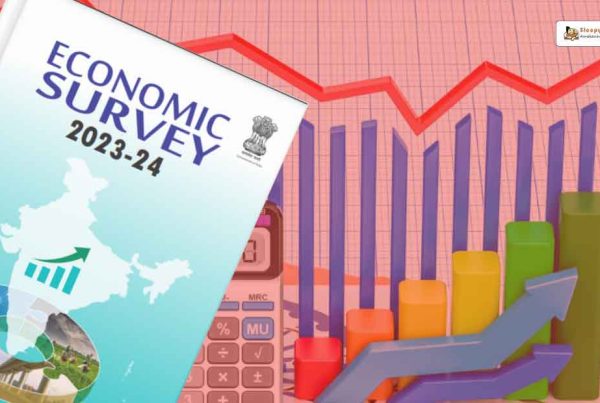Getting ready for the CSAT 2025 can feel like a mountain to climb, but with the right shortcuts, especially in quantitative aptitude, it’s totally doable. Think of this as your go-to guide, breaking down the essential tricks and strategies. Whether it’s mastering number systems or simplifying algebra, we’ve got you covered. And hey, if you’re looking for some extra help, Sleepy Classes might just be what you need.
Key Takeaways
- Understand the CSAT 2025 exam structure to plan your study approach.
- Focus on key quantitative topics like number systems, algebra, and geometry.
- Use shortcuts for quick calculations to save time during the exam.
- Practice data interpretation and logical reasoning regularly.
- Consider enrolling in Sleepy Classes for structured guidance.
Understanding the CSAT 2025 Exam Structure
Key Components of the CSAT Exam
The CSAT 2025 exam is a gateway for many aspirants aiming to join the civil services. It tests candidates on various fronts, ensuring they possess the necessary skills and knowledge. The exam consists of two main papers:
- Paper 1: This evaluates general studies, covering topics like history, geography, polity, economy, and current affairs. A broad understanding of these subjects is crucial.
- Paper 2 (CSAT): Known as the Civil Services Aptitude Test, this paper tests logical reasoning, analytical ability, and quantitative aptitude. It’s essential to score well here, as it’s qualifying in nature.
Importance of Quantitative Aptitude
Quantitative aptitude forms a significant part of the CSAT paper. It assesses a candidate’s numerical ability and problem-solving skills. Mastering this section can be a game-changer, as it helps in clearing the qualifying marks. Strong quantitative skills are crucial for decision-making and analysis in civil services.
Time Management Strategies
Managing your time effectively during the exam is as important as knowing the content. Here are some strategies to consider:
- Prioritize sections you are strong in to secure those marks first.
- Allocate time to each section and stick to it. Don’t spend too long on one question.
- Practice mock tests to get a feel for the timing and pressure of the actual exam.
Effective time management can significantly boost your exam performance. It’s not just about knowing the answers, but also about answering them efficiently within the time constraints.
Essential Quantitative Aptitude Topics for CSAT 2025
Number Systems and Simplifications
Understanding number systems is like having the right toolkit for solving math problems. You need to know how different numbers interact and simplify them to make calculations easier. Mastering simplifications can save you time and help you avoid mistakes. For example, breaking down complex numbers into simpler parts can make tough questions much more manageable.
Data Interpretation Techniques
Data interpretation is all about making sense of numbers and figures. You need to quickly analyze graphs, tables, and charts to find the needed information. Some handy tips include:
- Look for trends and patterns in the data.
- Compare figures to spot differences and similarities.
- Use estimation to get quick answers when exact calculations aren’t necessary.
Algebra and Geometry Essentials
Algebra and geometry are the backbone of quantitative aptitude. In algebra, you deal with equations and expressions, while geometry focuses on shapes and sizes. Key areas to focus on include:
- Solving linear equations efficiently.
- Understanding basic geometric shapes and their properties.
- Applying algebraic identities to simplify problems.
Tip: Practice regularly to become comfortable with these topics, as they form a significant part of the CSAT exam. Familiarity with these subjects can boost your confidence and performance during the test.
Mastering Number Systems for CSAT Success
Understanding Prime Numbers and Divisibility
Let’s kick things off with prime numbers. They’re the building blocks of number systems. A prime number is a natural number greater than 1 that isn’t divisible by any number other than 1 and itself. For instance, 2, 3, 5, and 7 are primes. Knowing how to quickly identify prime numbers can save you loads of time during the exam. A simple trick? For a number to be prime, it shouldn’t be divisible by any prime number up to its square root.
When it comes to divisibility, there are some handy rules to remember. For example:
- A number is divisible by 2 if its last digit is even.
- It’s divisible by 3 if the sum of its digits is divisible by 3.
- It’s divisible by 5 if it ends in 0 or 5.
These little shortcuts can help you breeze through questions without much calculation.
Shortcut Techniques for LCM and HCF
Finding the Least Common Multiple (LCM) and Highest Common Factor (HCF) can seem daunting at first, but with some practice, it gets easier. For LCM, list down the multiples of the numbers until you find the smallest common one. For HCF, it’s about finding the largest number that divides both numbers without a remainder.
Here’s a quick step-by-step for LCM:
- List the prime factors of each number.
- Multiply the highest power of each prime number together.
- That product is your LCM.
For HCF, you can use the Euclidean algorithm, which involves repeated division until you reach a remainder of zero.
Solving Complex Number Problems
Complex numbers might sound tricky, but they’re just numbers with a real part and an imaginary part. The basic form is a + bi, where “a” is the real part, and “bi” is the imaginary part. When dealing with complex numbers, remember:
- Addition and subtraction are straightforward: just combine like terms.
- For multiplication, use the distributive property and remember that i^2 = -1.
One tip? Always simplify your final answer. This means combining like terms and ensuring there are no imaginary units (i) left in the denominator.
Mastering number systems isn’t just about memorizing rules; it’s about understanding how numbers interact. With practice, these concepts become second nature, helping you tackle CSAT questions with confidence.
Incorporating effective time management strategies can further enhance your preparation, allowing you to allocate sufficient time to practice these concepts thoroughly.
Data Interpretation: Quick Analysis Techniques
Interpreting Graphs and Charts Efficiently
Graphs and charts can look intimidating at first, but they don’t have to be. Getting familiar with different types of graphs—like bar charts, line graphs, and pie charts—can make a huge difference. Understanding the story each graph tells is key. Start by identifying the axes and labels, then look for patterns or trends. Are the lines going up or down? Is there a sudden spike? These observations can give you quick insights without getting bogged down in numbers.
Solving Table-Based Questions
Tables are all about details. They pack a lot of information into a small space, so it’s important to know what to look for. Focus on the headers first—they tell you what each column and row represents. Then, scan for key figures or totals. Sometimes, tables include unnecessary data, so don’t get distracted. Practice with sample tables to get the hang of it.
Using Approximation for Faster Calculations
When you’re short on time, approximation can be your best friend. It’s not about getting the exact number but rather a close estimate. For example, if you’re adding numbers like 198 and 203, round them to 200. This makes mental calculations quicker and helps in saving precious seconds during the exam.
Sometimes, the fastest way to solve a problem is not by finding the precise answer but by getting a good enough estimate. This approach can be a game-changer in high-pressure situations like exams.
By mastering these techniques, you’ll be better equipped to handle data interpretation questions with confidence and speed. Remember, practice makes perfect, so keep honing these skills until they become second nature.
Algebraic Expressions and Equations Simplified
Solving Linear Equations Quickly
Linear equations are the backbone of algebra. To tackle them efficiently, remember to keep the equation balanced. Isolate the variable by performing the same operation on both sides of the equation. For instance, if you have (3x + 5 = 20), subtract 5 from both sides and then divide by 3 to find (x = 5). It’s all about maintaining balance.
Understanding Quadratic Equations
Quadratic equations might seem tricky at first, but they follow a pattern. The standard form is (ax^2 + bx + c = 0). You can solve these using the quadratic formula, factoring, or completing the square. The quadratic formula (x = \frac{-b \pm \sqrt{b^2 – 4ac}}{2a}) is your best friend here, especially when the equation doesn’t factor easily. Remember, practice makes perfect!
Utilizing Algebraic Identities
Algebraic identities are like shortcuts for solving problems. Memorize identities like ((a + b)^2 = a^2 + 2ab + b^2) and ((a – b)^2 = a^2 – 2ab + b^2). These can simplify complex expressions quickly. For example, if you see (49x^2 – 70x + 25), recognize it as ((7x – 5)^2). Spotting these patterns can save you a lot of time.
Algebra is not just about solving equations; it’s about recognizing patterns and applying them effectively. With practice, these techniques become second nature, making you faster and more confident in tackling algebra problems.
For more on preparing for the CSAT exam, check out our step-by-step guide.
Geometry and Mensuration: Key Formulas and Tricks
Memorizing Essential Geometry Formulas
Geometry can be a bit tricky, but having the right formulas at your fingertips makes it way easier. Key formulas are your best friends here. Think about the area of a circle, which is πr², or the perimeter of a rectangle, 2(l + w). These are not just numbers; they’re tools you need to solve real problems. Here’s a quick list to keep in mind:
- Triangles: Area = 1/2 × base × height
- Circles: Circumference = 2πr
- Rectangles: Area = length × width
A good tip is to write these down repeatedly or use flashcards. This helps in not just memorizing but understanding how and when to use them.
Quick Calculation of Areas and Volumes
When you’re in the exam hall, time is of the essence. You can’t afford to spend too long on one question. That’s where shortcuts for calculating areas and volumes come in. For instance, knowing that the volume of a cylinder is πr²h can save you precious minutes. Here’s a table to help you out:
| Shape | Area Formula | Volume Formula |
|---|---|---|
| Sphere | 4πr² | 4/3πr³ |
| Cylinder | 2πrh + 2πr² | πr²h |
| Cone | πr(r + l) | 1/3πr²h |
Understanding Coordinate Geometry
Coordinate geometry, or “analytical geometry,” is all about using algebra to solve geometry problems. It’s like a bridge connecting algebra and geometry. The key is to understand how to plot points and interpret graphs. You need to be comfortable with the slope-intercept form of a line, y = mx + b, where m is the slope and b is the y-intercept. This formula isn’t just about drawing lines; it’s about understanding the relationship between numbers and shapes.
“Geometry is the archetype of the beauty of the world.” This quote might sound lofty, but it’s a reminder that geometry is not just about lines and angles. It’s about understanding the world around us in a structured way.
Incorporate these formulas and tricks into your study routine to make geometry feel less like a chore and more like a puzzle waiting to be solved.
Time, Speed, and Distance: Simplified Approaches
Using Ratio and Proportion for Speed Problems
Let’s break down speed problems using ratios and proportions. It’s like this: when you know the ratio of two speeds, you can easily figure out the ratio of the times taken to cover the same distance. For example, if the speed ratio of A to B is 3:4, then the time ratio will flip to 4:3. This trick is super handy when you’re dealing with comparative speed questions.
Solving Train and Boat Questions
Train and boat questions can be a bit tricky, but once you get the hang of it, they’re not so bad. Key point here is to remember the relative speed concept. For trains crossing each other or a platform, add their speeds if they’re moving towards each other, and subtract if they’re moving apart. With boats, consider the stream’s speed: downstream, add it; upstream, subtract it. Here’s a quick table to remember:
| Scenario | Calculation |
|---|---|
| Trains towards | Speed1 + Speed2 |
| Trains apart | Speed1 – Speed2 |
| Boat downstream | Boat speed + Stream speed |
| Boat upstream | Boat speed – Stream speed |
Understanding Relative Speed
Relative speed is a game-changer in solving time, speed, and distance problems. Imagine two objects moving in opposite directions. The relative speed is simply the sum of their speeds. But if they’re moving in the same direction, it’s the difference. This concept is vital in UPSC preparation where analytical thinking is key. Always keep this in mind when tackling problems involving multiple moving objects.
Mastering these concepts not only boosts your problem-solving speed but also builds confidence. With practice, these approaches become second nature, making the quantitative section of the CSAT exam much more manageable.
Probability and Permutations: Easy Methods
Understanding probability can seem tricky at first, but once you break it down, it’s pretty straightforward. Probability is all about measuring how likely something is to happen. For example, if you flip a coin, there’s a 50% chance it’ll land on heads. In math terms, that’s a probability of 0.5. To get a grip on probability, you need to know about outcomes and events. An outcome is just one possible result, like getting a 4 when you roll a die. An event is a group of outcomes, like rolling an even number.
Solving Permutation and Combination Problems
Permutations and combinations are about arranging and selecting items. Permutations are when order matters. Think about arranging books on a shelf. If you swap two books, you get a different arrangement, right? Combinations, on the other hand, don’t care about order. It’s like picking a team from a group. Whether you pick Alice first or Bob, the team stays the same. A simple way to remember is: permutations = position matters, combinations = position doesn’t matter.
Using Probability in Real-Life Scenarios
Probability isn’t just for math class. It’s everywhere in real life. From deciding if you should carry an umbrella (based on the chance of rain) to playing card games, probability helps you make better decisions. Let’s say you’re playing a game where you draw cards from a deck. Knowing the probability of drawing an ace can help you plan your next move. In real life, understanding probability can even help in GS Paper 3 of the UPSC Mains exam, where integrating data and statistics is key.
Probability and permutations might seem like just numbers and formulas, but they’re really about understanding how the world works. Once you get the hang of them, you’ll start seeing patterns and making predictions in everyday situations.
Logical Reasoning and Analytical Ability
Logical sequences are like puzzles waiting to be solved. They require you to identify patterns and predict what comes next. To get good at this, practice is key. Start with simple sequences and gradually increase the complexity. The more you practice, the better you’ll become at spotting patterns quickly. Consider using number sequences or letter sequences as a starting point.
Solving Puzzles and Arrangements
Puzzles and seating arrangements are a staple in many competitive exams, including the CSAT. They test your ability to organize information logically. Here are some tips:
- Break down the problem into smaller parts.
- Use diagrams or tables to visualize the arrangement.
- Keep track of constraints and eliminate impossible options.
Critical Thinking for Problem Solving
Critical thinking is about evaluating information objectively and making reasoned judgments. When faced with a problem, ask yourself:
- What is the problem really asking?
- What information do I have, and what do I need?
- How can I break this problem down into manageable parts?
Developing strong logical reasoning skills is essential for success in exams like the UPSC CSAT. Regular practice with puzzles, arrangements, and riddles can enhance these skills effectively.
Effective Time Management During the Exam
Prioritizing Questions for Maximum Score
When you’re staring at the exam paper, it’s easy to feel overwhelmed. But here’s the thing: not every question carries the same weight in terms of difficulty or time. Identifying the questions you can tackle quickly and correctly is key. Start by skimming through the entire paper. Mark the ones you’re confident about and can solve fast. This way, you secure those marks first, building your confidence as you go.
Avoiding Common Pitfalls
We’ve all been there—spending way too much time on a single question. It’s a trap! If you find yourself stuck, move on. It’s better to come back to it later with fresh eyes. Also, avoid second-guessing yourself on every question. Trust your preparation and instincts.
Utilizing Breaks Wisely
Breaks during an exam are like small windows to recharge. Use them to clear your mind. Stretch a bit, take deep breaths, and sip water. This helps in reducing stress and keeps you sharp for the next round of questions.
Remember, effective time management isn’t just about speed; it’s about smart decision-making. Prioritize, avoid getting bogged down, and use your breaks to stay fresh.
For more tips on managing your time effectively during exams, consider taking mock tests and utilizing effective study materials to simulate real exam conditions. These practices can significantly enhance your efficiency and time management skills.
Practice and Revision Strategies for CSAT 2025
Creating a Study Schedule
Getting ready for the CSAT 2025? It’s all about planning. Start by making a study plan that fits your life. Break your study sessions into smaller, focused chunks. Aim for consistency over cramming. It’s like trying to eat an elephant—one bite at a time. Balance your time between different subjects, making sure to focus more on your weak spots.
Using Mock Tests Effectively
Mock tests are your best friend when prepping for exams. They help you get comfy with the exam format and timing. Try to simulate real test conditions to get the most out of them. After each test, spend time analyzing your mistakes. Look for patterns in your errors and work on those areas. It’s all about working smarter, not harder.
Reviewing Mistakes and Learning
Mistakes are part of the process. After each mock test, jot down where you slipped up. It’s not just about knowing the right answer but understanding why you got it wrong. Create a “mistake log” to track these errors. Over time, you’ll see patterns and can tackle them head-on. Remember, every error is a stepping stone to success.
Consistent revision and practice are the keys to success in CSAT 2025. They build confidence and ensure you’re ready for anything the exam throws your way.
By following a structured study plan, regularly revising, and practicing with mock tests, you can enhance your accuracy and time management skills, setting yourself up for success in the exam.
Wrapping It Up
So, there you have it, folks. Cracking the CSAT in 2025 isn’t just about hard work; it’s about working smart. We’ve gone through some nifty shortcuts that can save you time and boost your score. But remember, practice is key. Keep at it, and don’t let the pressure get to you. If you’re looking for a bit more guidance, Sleepy Classes offers some great resources that might just be the help you need. Dive into those, and who knows? You might find yourself breezing through those tricky questions. Good luck, and keep pushing forward!
Frequently Asked Questions
What is the CSAT exam all about?
The CSAT exam is a part of the UPSC Civil Services Examination. It tests your skills in areas like math, logic, and comprehension.
Why is Quantitative Aptitude important for CSAT?
Quantitative Aptitude is crucial because it helps in solving math problems quickly, which is vital for scoring well in the CSAT.
How can I manage my time effectively during the CSAT exam?
To manage time well, practice with mock tests, prioritize easier questions, and keep track of time during the exam.
What are the key topics in Quantitative Aptitude for CSAT?
Key topics include number systems, data interpretation, algebra, geometry, time and speed, and probability.
How can I improve my skills in number systems?
You can improve by learning about prime numbers, divisibility rules, and practicing problems on LCM and HCF.
What are some quick tips for data interpretation?
Focus on understanding graphs and tables quickly, and use approximation methods to save time while calculating.
How do I solve algebraic equations faster?
Learn shortcuts for solving linear and quadratic equations, and practice using algebraic identities to simplify problems.
Where can I find good resources for CSAT preparation?
You can find helpful resources at Sleepy Classes, which offers online courses and practice tests tailored for CSAT.






